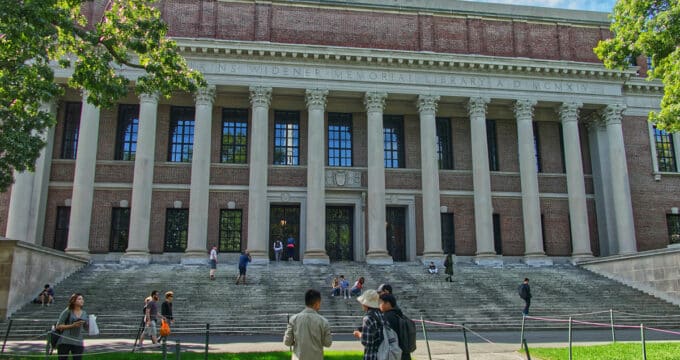Malaysia releases landmark education blueprint
Malaysia’s commitment to being a world-class knowledge economy - and a regional education hub - received a boost this month with the launch of a new higher education strategy: The Malaysia Education Blueprint 2015-2025 (Higher Education). Malaysia’s Prime Minister Dato' Sri Mohammad Najib bin Tun Abdul Razak launched the blueprint in Kuala Lumpur, and spoke passionately about its broadest themes, known as the “Three B’s”:
- Bakat (talent): Higher education is to nurture domestic talent and be of a quality that attracts international students from the region.
- Benchmarking to global standards: Malaysia’s goal is to be in the top one-third of nations in the world for education, and to increase the number of its universities in world rankings such as the QS.
- Balance: Malaysia’s university graduates are to be equipped not only with skills and knowledge (ilmu), but a moral, “spiritual” context (akhlak) in which to put them to use.
New priorities for a changed environment
Education Ministry Secretary General II Dato' Seri Ir Dr. Zaini Ujang organised the creation of the blueprint, a process that took two years. New Straits Times reports:
“All said, 10,500 people representing stakeholders, school administrators, unions, associations, alumni and even students were engaged over the years. The voluminous publication is the handiwork of 14 chapter-writing teams and 20 lead authors.”
The catalyst for the blueprint was the recognition of how much has changed since the last strategic plan, thus the need for updating (including changing the initial target of hosting 200,000 international students by 2020 to 250,000 by 2025). Professor Zaini explained:
“This blueprint is crucial to outline what is new in higher education. We didn’t want to use what we planned back in 2006 because much time has passed since then. There have been a lot of new developments and so we need to update our strategies. [For example] Now, many people learn through mobile devices. Students already have this ‘machine’- their handphones. So, we have to leverage on it.”
Also spurring the report were the challenges facing Malaysia’s higher education system, especially in relation to domestic and global labour markets. The blueprint report notes these as current challenges that must be overcome:
- Graduates lacking critical thinking and communication skills, as well as English-language proficiency;
- Insufficient links between academia and industry, “particularly with regard to research, development, and commercialisation”;
- Systemic issues hampering the efficiency and financial sustainability of the system.
Stated targets for 2025
Malaysia has already achieved some impressive feats in the last few years in terms of education. For one, Malaysia's currently allocates 7.7% of its budget spending to higher education, compared to Japan (1%), Korea (3.9%), Indonesia (3.1%), Thailand (3%) and Singapore (6.4%). And over the past decade, higher education enrolments in Malaysia have grown by 70% to include 1.2 million students today. In 2010 compared to 1990, six times as many students are enrolled in bachelor degrees and ten times as many are enrolled in post-graduate degrees. Malaysia is behind only Singapore and Thailand among ASEAN countries for masters and PhD enrolments. The Malaysia Education Blueprint has set new targets for 2025, including:
- Improving tertiary enrolment rates from 36% currently to 53%, and higher education enrolment from 48% to 70% - especially via opening up spaces in technical and vocational education and training (TVET), private institutions, and online learning;
- Increasing the current 75% graduate employability rate to more than 80% in 2025;
- Placing one university in Asia’s Top 25, two in the Global Top 100, and four in the Global Top 200 (currently there is one Malaysian university in the Global Top 200 and five in the Asian Top 100);
- Increasing international students to 250,000;
- Placing among the top 25 in the 50 countries Universitas 21 ranks in terms of research, enrolment, and employability (Malaysia is currently 44th).
Toward a modernised higher education system
The Malaysia Education Blueprint recognises the growing importance of vocational and technical skills in the global economy, as well as how learning technologies can improve student outcomes and access to higher education. The blueprint calls for an “entrepreneurial mindset” among students and institutions, one that produces graduates with a drive to create jobs, rather than to only seek jobs. It associates this with an expanded set of educational options for students, with vocational and technical training valued as highly as traditional university programmes, and greater emphasis on lifelong learning programmes. To improve outcomes, the blueprint calls for technologies in the classroom to enable the personalisation of the learning experience. Even more, it wants:
“ … the conversion of common undergraduate courses into MOOCs, and up to 70% of programmes to use blended learning models.”
According to the blueprint, the Malaysian government will give up some of its control over the higher education system to individual institutions that meet standards in a national regulatory framework. Higher education providers are to enjoy greater decision-making in areas such as curriculum, financial matters, and how they hire. The hope is that with more autonomy, institutions will be able to respond more quickly to global educational and economic trends. In return, the government is asking that institutions commit to establishing strong relationships with industry, and incorporate industry thinking into their programmes.
International students are part of the plan
As mentioned, the new goal is to have 250,000 international students enrolled in Malaysian institutions by 2025. When we last reported on Malaysia in 2014, there were more than 103,000 international students enrolled in Malaysia in 2013, up from 27,872 in 2002 and 80,750 in 2009. If everything goes according to plan, the Malaysian higher education infrastructure will have adapted sufficiently to meet the new target, by being able to produce “talent” comparable to institutions in other developed knowledge economies. As Prime Minister Najib said in his speech launching the blueprint:
“Any nation wishing to compete internationally will say it is about talent. So our education must generate talent, and to get that we are setting international benchmarks, aiming to be among the top one-third of nations in the world. All that we do will have global benchmarks, so Malaysia's standards will improve … [We] want to be among the best.”


















